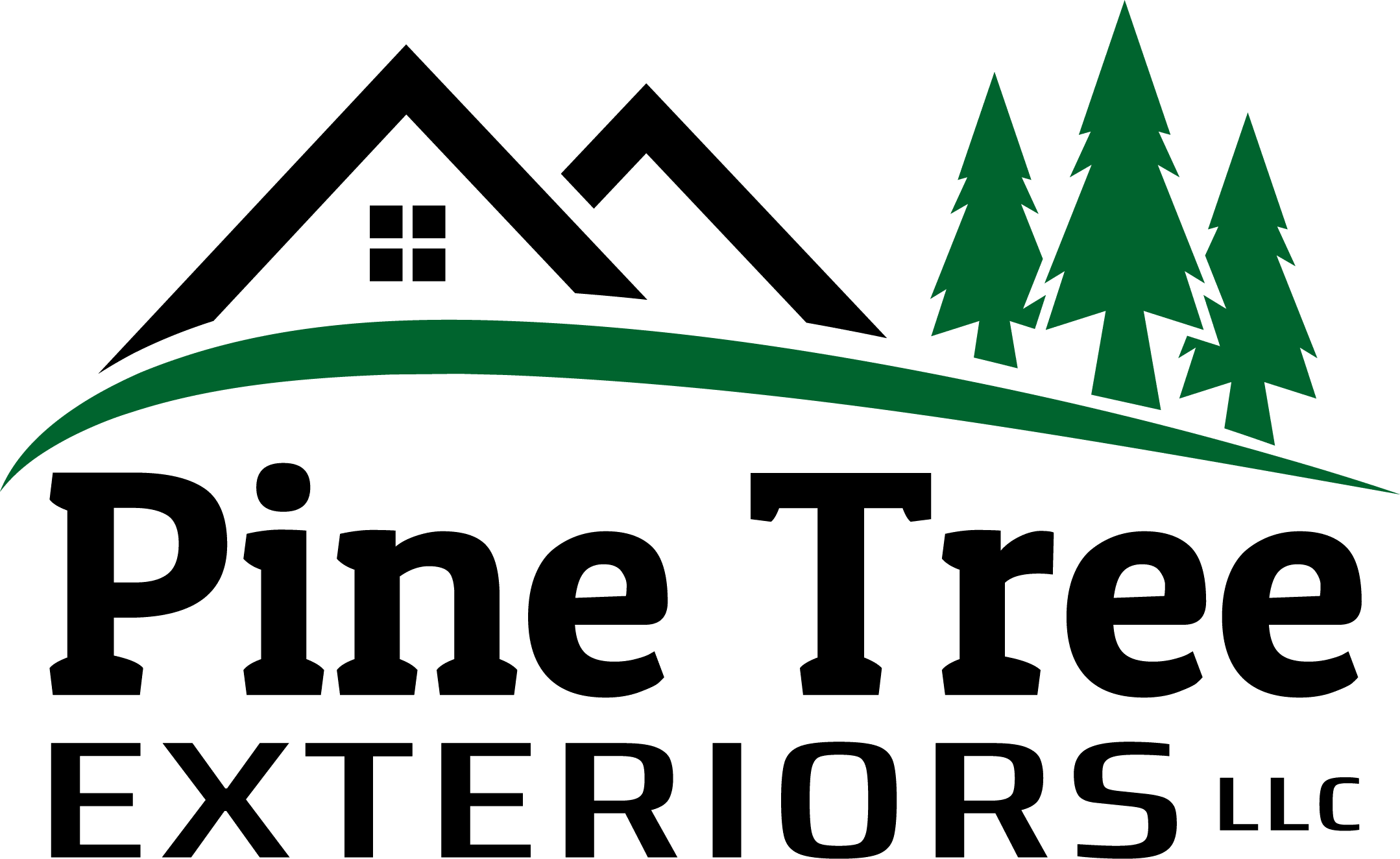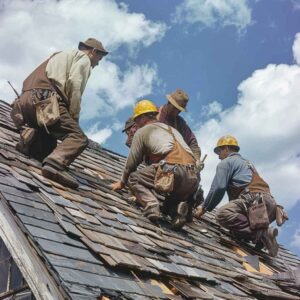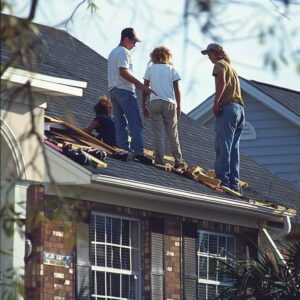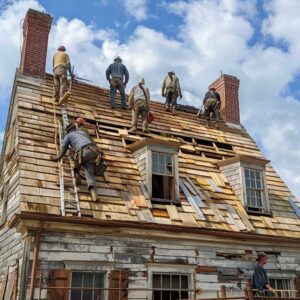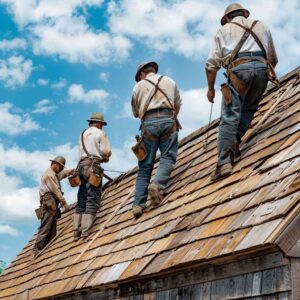After a storm, examine your roof shingles for cracks, curling, missing pieces, granule loss, and algae/moss growth. Check flashing for rust, corrosion, gaps, and seals for cracks or peeling. Inspect gutters for damage clogs, and make sure they are securely attached. Examine downspouts for blockages and proper extension lengths. Evaluate your attic for water stains, mold, and leaks. Address any issues promptly to prevent additional damage. Conducting a comprehensive roof storm damage checklist with a roofing contractor will help protect your home from post-storm possible problems.
Inspection of Roof Shingles
When examining roof shingles for storm damage, carefully inspect each shingle for signs of cracks, curling, or missing pieces. Begin by visually scanning the entire roof to identify any evident issues from a distance. Once up close, pay close attention to the state of each shingle. Look for cracks, which can weaken the shingle and allow water infiltration. Curling shingles at the edges or in the middle indicate aging or wind damage and may be prone to further deterioration. Missing pieces leave the roof vulnerable to leaks and should be addressed promptly. Check for granule loss, as bald spots on shingles can shorten their lifespan.
Moreover, examine for algae or moss growth, which can signal trapped moisture. Document any findings with photographs, ensuring the capture of the extent of the damage for insurance purposes. Regularly evaluating the condition of roof shingles is vital for maintaining a secure and watertight roof structure.
Examination of Flashing and Seals
Thoroughly evaluating the condition of flashing and seals on your roof is essential for identifying potential vulnerabilities and safeguarding the effectiveness of your roofing system. Flashing, typically made of metal or other weather-resistant materials, is installed around roof protrusions such as chimneys, vents, and skylights to prevent water from seeping into the roof deck. Inspect the flashing for any signs of damage, such as rust, corrosion, or gaps between the flashing and the roof surface, as these can lead to water infiltration during storms.
Seals, including caulking and other sealants, play a pivotal role in maintaining the integrity of your roof. Check for cracks, peeling, or deterioration in the seals around penetrations and seams. Damaged seals can compromise the waterproofing of your roof and increase the risk of leaks. Addressing any issues with flashing and seals promptly can help prevent costly water damage and ensure the long-term durability of your roofing system.
Assessment of Gutters and Downspouts
Evaluating the condition of gutters and downspouts is essential in maintaining an effective drainage system for your roof and safeguarding against potential water-related issues. Start by inspecting gutters for any signs of damage, such as cracks, rust, or sagging. Check for clogs caused by debris like leaves or branches, as these can obstruct water flow and lead to overflow issues. Ensure that the gutters are securely attached to the roofline and that there are no loose or missing sections.
Next, examine the downspouts for blockages or bends that may impede water from properly draining away from the house’s foundation. Downspouts must extend at least 5 feet from the building to prevent water pooling near the structure. Moreover, the connections between the gutters and downspouts should be assessed to confirm they are tightly sealed and leaks-free.
Regular gutters and downspouts maintenance is essential in preventing water damage to your roof and home, especially after a storm. By addressing any issues promptly, you can guarantee optimal drainage system functionality and protect your property from potential water-related harm.
Evaluation of Attic for Leaks
Evaluating the attic for potential leaks is essential in ensuring your home’s structural integrity and protection following a roof storm damage event. Begin by examining the attic ceiling and walls for any signs of water stains, moisture, or discoloration, as these are indicators of a critical leak. Inspect the insulation for dampness or mold growth, as these issues can arise from water infiltration. Check for any visible holes, cracks, or gaps in the roof decking or around vents and chimneys that may allow water to seep through.
Furthermore, assess the underside of the roof for water drips or active leaks during rainfall. Use a flashlight to look for any daylight penetrating through the roof, which could pinpoint areas of concern. It’s essential to address any identified leaks promptly to prevent further damage to the attic structure, insulation, and overall home. By thoroughly evaluating the attic for leaks, you can mitigate potential risks and safeguard your property from extensive storm-related issues.
Other Roofing Tips:
